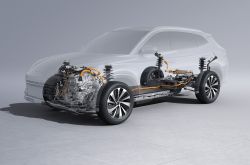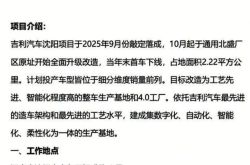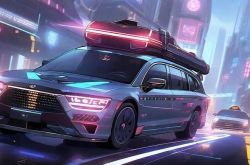The World's First Robot Marathon: Decoding the Excitement Behind the Race
![]() 04/21 2025
04/21 2025
![]() 513
513
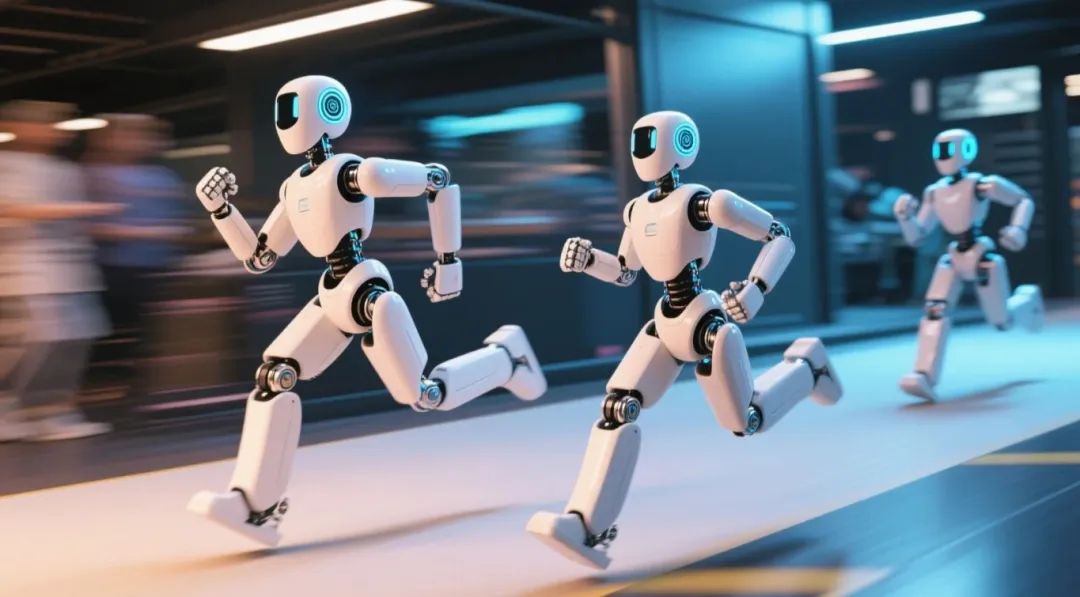
Produced by: Pai Finance Original (ID: paicj314) | Written by: Lin Lan
On April 19, 2025, at 7:30 a.m., the Beijing Yizhuang Half Marathon and Humanoid Robot Half Marathon kicked off in a thrilling manner. This marked the world's inaugural humanoid robot marathon.
In this groundbreaking event, human athletes and humanoid robots started simultaneously and followed the same 21.0975-kilometer course, albeit separated by safety barriers. The racecourse traversed Beijing Economic-Technological Development Area's public roads, featuring diverse terrains, 14 turns, and various road surfaces such as asphalt, bumpy and cracked roads, stone pathways, grasslands, and gravel paths. Additionally, sections with railway tracks posed a significant challenge for the robots.
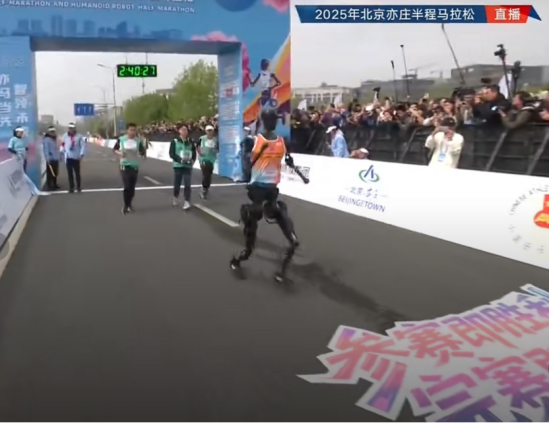
Regarding the specific competition rules, robots were afforded some flexibility. With the consent of accompanying judges, they could replace their batteries or even switch to another robot during the race. Battery replacements incurred no penalty time, whereas robot substitutions did.
Ultimately, the championship was won by Tiangong robots, developed by the Beijing Humanoid Robot Innovation Center and UBTECH, among the participating robot teams.
A Small Step for Robots, a Giant Leap for Humanity
The industry widely considers the humanoid form as the pinnacle of robot design, offering numerous advantages. Firstly, humans' upright stance frees their hands for using various tools. Secondly, with a body structure akin to humans, humanoid robots can better adapt to human environments and tools. Thirdly, their human-like appearance and behavior patterns foster a sense of intimacy and trust among users, giving them an edge in service industries, households, and other application scenarios. Lastly, the similarity in physical structure allows human motion videos to serve as training data, alleviating the data scarcity often encountered in training embodied intelligence models.
However, these advantages come with challenges. Firstly, compared to robots with lower limb forms like quadrupeds or wheeled robots, humanoid robots face difficulties in stability and motion control due to their short ground contact time and small contact area. Secondly, bipedal robots' high energy consumption poses stringent requirements on the power system and energy management. Furthermore, in lower limb motions like running, the body needs to be lightweight, making it difficult to install large batteries, thereby complicating endurance issues.
These challenges are exacerbated in a half marathon, where robots must endure prolonged running, navigate complex road conditions, and handle possible emergencies. As Guo Yijie, the technical leader of the "Tiangong Team," explained, preparing a humanoid robot for a marathon requires thorough preparation at both the embodied intelligence "brain and cerebellum" levels and the physical optimization level. For the "brain," it's crucial to explore the peak boundaries of joint torque and rotational speed through algorithms to continuously improve running speed. Secondly, enhancing the accuracy of self-state and environmental state perception during motion and making corresponding adjustments to improve motion stability is essential. Additionally, incorporating human motion data can make the running posture of humanoid robots more "human-like." For the "body," it's necessary to reduce the robot's structural weight, find a balance between weight and strength, and improve heat conduction and air-cooled heat dissipation technologies to enhance stability and endurance.
Thus, the half marathon becomes a "gaokao" (a crucial exam in China) for testing robots' comprehensive abilities in a real competition setting. As the event organizer stated during a press conference for the test race, the marathon assesses a robot's motion efficiency, power batteries, joints, materials, and a series of other cross-fusion technologies, reflecting reliability, safety, and durability. Jiang Zheyuan, Chief Technology Officer of Songyan Power, also believes that the half marathon is a comprehensive test for humanoid robots, challenging both algorithmic capabilities and hardware bodies under conditions of long-distance and continuous operation over an extended period. Therefore, the successful completion of the race by these participating robots signifies the robust momentum of China's humanoid robot industry.
The event also holds significant implications for the subsequent development of the robot industry. Wang Guolin, deputy leader of the competition organizing group, believes that the competition can comprehensively evaluate various robots' abilities and promote the development of the embodied robot industry. The Xinhua News Agency also opines that this event will drive products to further engage in disaster relief, long-distance inspections, special hazardous operations, intelligent manufacturing, sports coaching, and other social and production scenarios.
Why Yizhuang?
Beijing attaches great importance to the robot industry, having issued special policies such as the "Beijing Embodied Intelligence Technological Innovation and Industry Cultivation Action Plan (2025-2027)" and established a 15-year government investment fund totaling 100 billion yuan, focusing on supporting the development of future industries like artificial intelligence and robotics.
As the only national economic and technological development zone in Beijing, Yizhuang pays special attention to the robot industry. Its "Action Plan for Building a World-Class Embodied Intelligent Robot Industry New City (2024-2026)" provides comprehensive support for the robot industry in terms of funding, venues, and technical verification, releasing over 10,000 robot application opportunities and nearly 5 billion yuan in procurement demand. Additionally, Yizhuang's city's first humanoid robot future industry incubator, robot flexible and agile manufacturing platform, national robot testing and evaluation center platform, and benchmark robot incubator have strongly supported the smooth conduct of this event.
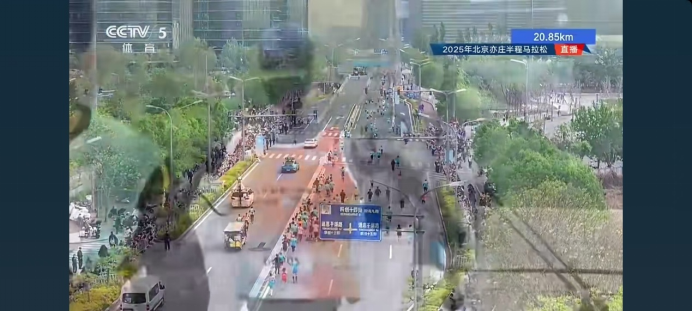
With policy and financial support, Beijing Yizhuang has now formed a complete industrial chain ecosystem ranging from robot core components to complete machine manufacturing. In the core components sector, enterprises like Zhitong Technology and SMC focus on the production of key components such as motors, reducers, and sensors. In the complete machine manufacturing sector, renowned enterprises like UBTECH and Xiaomi Robotics thrive. These enterprises collaborate closely in research and development, production, and application, forming a well-integrated industrial chain. This enables the hosting of the robot marathon in Yizhuang, providing abundant technical and product support for the event and further promoting industrial exchanges and development through it.
Furthermore, as the permanent host of the World Robot Conference, Beijing Yizhuang has accumulated substantial experience in organizing robot "gatherings." Therefore, the support team can meticulously plan various aspects such as design and operation, venue layout, event services, security services, and technical support to ensure the high quality of the event.
Some Imperfections Behind the Victory
Despite being a generally successful event, this competition also had some imperfections.
Firstly, most robots did not run completely autonomously. Even powerful runners like Tiangong required human pacers equipped with guiding devices to "accompany" them. On-site observations revealed that staff members occasionally needed to lift the "handrails" on the robots' shoulders to ensure stability. Some robots, like those from Tsinghua University and Songyan Power, required staff members to assist in control using nearby remote controllers. Moreover, almost every robot underwent several battery swaps midway through the race, and some robots even resorted to "switching runners" due to malfunctions or other reasons. It's evident that while the mid-to-long-distance running technology of participating humanoid robots has made significant progress, there's still room for improvement.

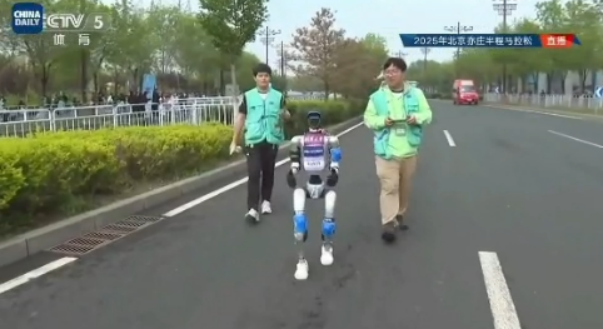
The absence of some participating teams is also slightly regrettable. On one hand, no well-known foreign robots participated, such as Tesla's Optimus, Boston Dynamics' Atlas, or EVE funded by OpenAI. On the other hand, some renowned domestic robots did not "gather" for various reasons, including Zhongqing Corporation's humanoid robot PM01, which is also adept at running, as well as Fourier's GR-2 and Xiaomi's CyberOne.
Lastly, the marathon format mainly tests the lower limb performance of robots. While lower limb motion is one of the "basic skills" of robots, essentially addressing the issue of "how to maintain balance in motion with a rigid structure," it has relatively few direct application scenarios. In contrast, upper limb motion, especially the use of dexterous hands, may be more crucial in the practical applications of robots.
Perhaps what's heartening about this event is that it unabashedly showcases the "adolescence" of technology and industry through live broadcasts—there are both the triumphant moments when robots cross the finish line and the chaos during mid-race battery swaps; there are both the exhilarating breakthroughs in control algorithms and the frustration imposed by motion hardware limitations. Just as a few lost points in an exam do not hinder the overall development of a long life, this event also deserves to be viewed from a more inclusive and encouraging perspective.
As Liang Liang, Deputy Director of the Beijing Economic-Technological Development Area Management Committee, stated, the completion of the marathon by robots is not the end but the starting point for industrial development and exchanges. This event may only be the prologue to the takeoff of the robot industry. With the implementation of policies and the injection of the "trillion-yuan fund," China's future humanoid robots will transcend the marathon track and run faster in scenarios such as intelligent manufacturing, disaster relief, and household applications.





